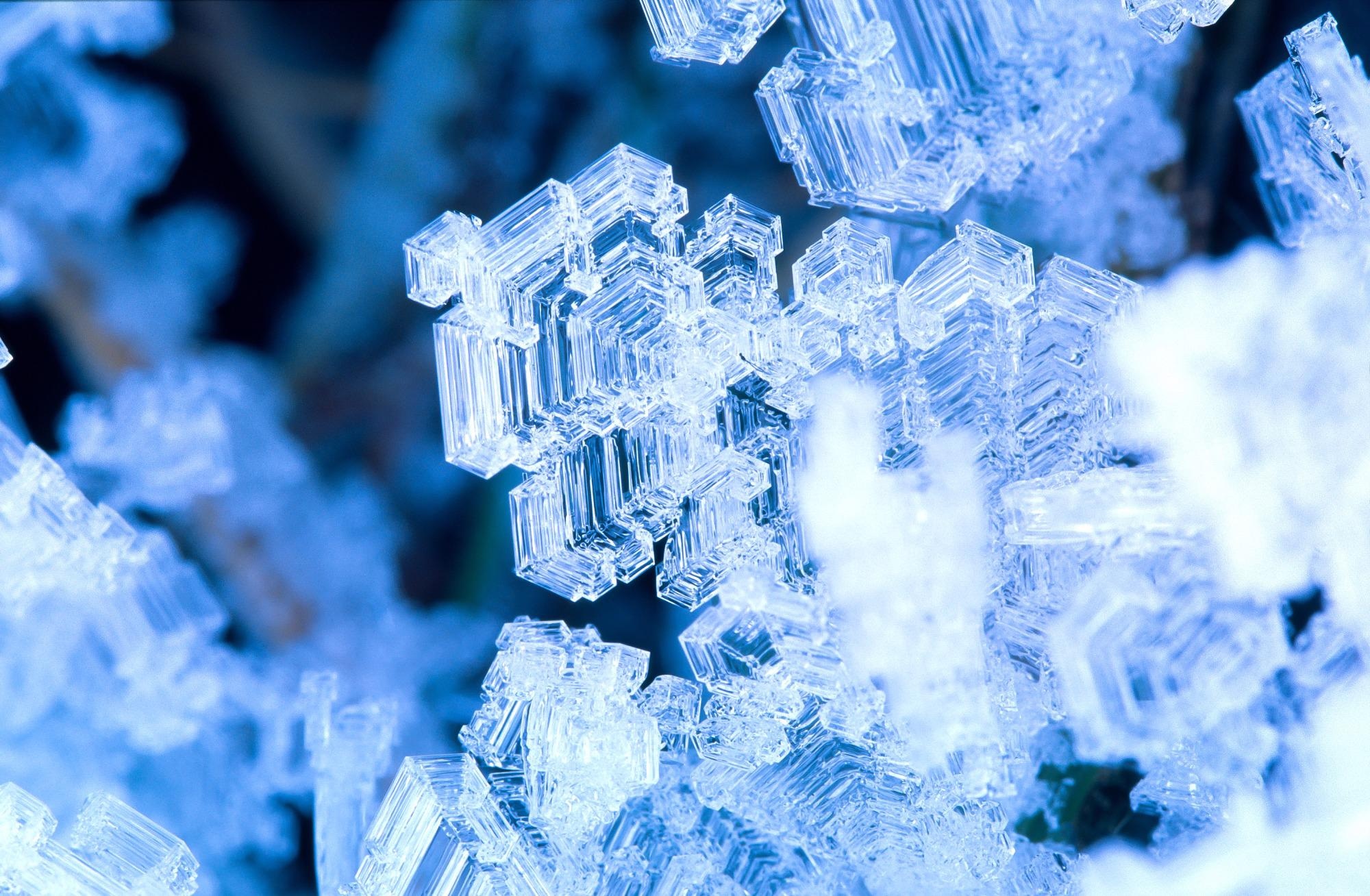Feb 19 2021
Ice is an extremely multipurpose material. The oxygen atoms in ice cubes or snowflakes are arranged in a hexagonal pattern. An ice form like this is referred to as ice one (ice I).

Image Credit: pixelshop/shutterstock.com
Strictly speaking, however, these are not actually perfect crystals, but disordered systems in which the water molecules are randomly oriented in different spatial directions.
Thomas Loerting, Institute of Physical Chemistry, University of Innsbruck, Austria
A total of 18 crystalline forms of ice, including ice I, were known to date, which vary in terms of the arrangement of their atoms. Polymorphs refer to different types of ice and they form based on specific temperature and pressure conditions.
Polymorphs also have highly different characteristics. For instance, the melting points of polymorphs vary by many hundred degrees Celsius.
“It's comparable to diamond and graphite, both of which are made of pure carbon,” explained the chemist Loerting.
Icy Variety
Upon intense cooling of standard ice I, the hydrogen atoms will organize themselves intermittently apart from the oxygen atoms if the experiment is performed properly. Less than −200°C, this can result in the formation of what is called the ice XI, wherein all water molecules are arranged in accordance with a particular pattern.
These ordered ice forms vary from the disordered parental forms, particularly in their electrical characteristics. In the new study, chemists from the University of Innsbruck tackled the parent form ice VI, which is created at intense pressure, for instance, in the mantle of the Earth.
This high pressure form of ice is similar to hexagonal ice and is not a fully ordered crystal. Over a decade ago, a team from the University of Innsbruck created a hydrogen-ordered variant of this ice, which eventually made its way into textbooks in the form of ice XV.
For the first time, Thomas Loerting’s research team was able to produce a second ordered form for ice VI by modifying the manufacturing process three years ago.
The researchers achieved this by considerably slowing down the cooling process and increasing the pressure to about 20 kbar. This allowed the team to organize the hydrogen atoms in another way in the oxygen lattice and create ice XIX.
We found clear evidence at that time that it is a new ordered variant, but we were not able to elucidate the crystal structure.
Thomas Loerting, Institute of Physical Chemistry, University of Innsbruck, Austria
Loerting’s team has now succeeded in doing precisely that by using neutron diffraction—the gold standard for determining structures.
Crystal Structure Solved
To explain the crystal structure, a major technical barrier had to be resolved. In a study using neutron diffraction, the light hydrogen in water should be replaced with deuterium or 'heavy hydrogen.'
Unfortunately, this also changes the time scales for ordering in the ice manufacturing process. But Ph.D. student Tobias Gasser then had the crucial idea of adding a few percent of normal water to the heavy water—which turned out to speed up the ordering immensely.
Thomas Loerting, Institute of Physical Chemistry, University of Innsbruck, Austria
Using the ice archived in this manner, the researchers from the University of Innsbruck finally succeeded in measuring the neutron data on the high-resolution HRPD system installed at the Rutherford Appleton Laboratory in England and meticulously solved the crystal structure of ice XIX.
This involved searching for the most optimal crystal structure out of many thousand candidates from the quantified data—almost like looking for a needle in a haystack.
In another experiment under varying pressure conditions, a Japanese research team confirmed the result provided by the Innsbruck team. Both articles have now been published together in the Nature Communications journal.
Six Ice Forms Discovered in Innsbruck
Although standard snow and ice are abundantly found on Earth, no other forms are present on the planet’s surface, other than in research laboratories. But the high pressure forms, that is, ice VII and ice VI, are present in diamonds and have, thus, been included in the list of minerals by the International Mineralogical Association (IMA).
Within the vastness of space, several varieties of water ice are formed under unique temperature and pressure conditions. For instance, these varieties are found on celestial bodies, like the moon Ganymede of Jupiter, surrounded by layers of different varieties of ice.
Both Ice XV and ice XIX denote the first pair of siblings in ice physics, wherein the oxygen lattice remains the same but the ordered pattern of hydrogen atoms is different.
“This also means that for the first time it is now possible to realize the transition between two ordered ice forms in experiments,” added Thomas Loerting excitingly.
Since the 1980s, scientists from the University of Innsbruck, Austria, have been responsible for identifying four crystalline and two forms of amorphous ice.
The new study was performed within the framework of the Research Platform for Materials and Nanoscience at the University of Innsbruck and was funded by the Austrian Science Fund FWF.